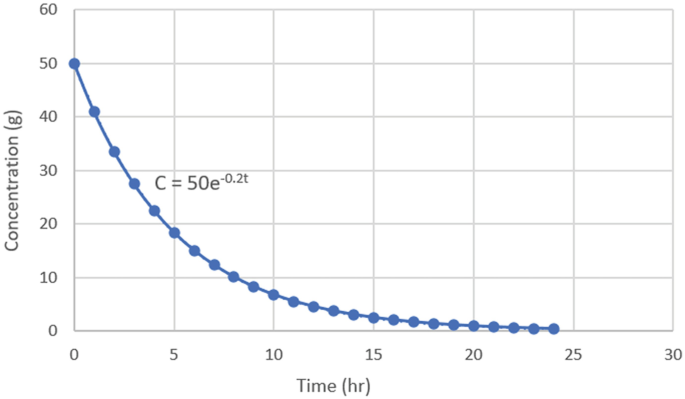Abstract
It is important that engineers have a good understanding of mathematics because, as it was stated in Chap. 11, engineering problems are mathematical models of physical situations. Engineers use a wide variety of mathematic concepts when they are formulating and solving problems. Different physical situations have different forms, so this chapter will discuss various mathematical models that are commonly applied, types that are both linear and nonlinear. This chapter will also introduce some common mathematical operations that are regularly used in engineering, such as linear interpolation and solving systems of linear equations. We will also discuss common mathematical symbols and variables used and talk about how to organize and reconstruct word problems into steps and mathematical operations. This is just an introduction. Throughout your engineering curriculum, you will take separate math classes covering topics such as calculus, linear algebra, and ordinary differential equations.
Access this chapter
Tax calculation will be finalised at checkout
Purchases are for personal use only
References
Marion, G., & Lawson, D. (2015). An Introduction to Mathematical Modelling.
Weisstein, Eric W. “e”. mathworld.wolfram.com. Retrieved May 5, 2021.
Estimated Median Age at First Marriage by Sex: 1980 to the Present. United States Census Bureau. https://www.census.gov/data/tables/time-series/demo/families/marital.html
Abdulhafedh, A. (2020). Highway Stopping Sight Distance, Decision Sight Distance, and Passing Sight Distance Based on AASHTO Models. Open Access Library Journal, 7, 1–24. https://doi.org/10.4236/oalib.1106095
Author information
Authors and Affiliations
End of Chapter Problems
End of Chapter Problems
1.1 IBL Problems
IBL1: The following table shows the cost of a slice of pizza dependent on the number of extra toppings. Answer the following questions:
Toppings (x) | Cost (y) |
|---|---|
2 | $3.50 |
3 | $4.25 |
5 | $5.75 |
-
1.
Based on the table, how much does it cost to have five toppings on a slice of pizza?
-
2.
Based on the table, how much does it cost to have three toppings on a slice of pizza?
-
3.
Based on the previous two questions, how much does it cost to add two additional toppings on a slice of pizza?
-
4.
Based on the table, how much does it cost to have two toppings on a slice of pizza?
-
5.
Based on the previous two questions, how much does it cost to add one additional topping on a slice of pizza?
-
6.
How much does a slice of pizza cost with four toppings on it?
-
7.
How much does a slice of plain cheese pizza cost (only one topping)?
-
8.
Explain the relationship between the cost of a slice of pizza and the number of extra toppings.
-
9.
Develop an equation for the relationship between the cost of a slice of pizza and the number of extra toppings.
IBL2: You are throwing a Halloween party, so you go to the store to get a mix of candy. Chocolate candy costs $1.20 per pound and sour candy costs $1.50 per pound. You want to buy 15 pounds of sour candy. Answer the following questions
-
1.
How much does one pound of chocolate candy cost?
-
2.
How much does two pounds of chocolate candy cost?
-
3.
How much does three pounds of chocolate candy cost?
-
4.
If the amount of chocolate candy is labeled as X, write an equation for the cost of X amount of chocolate candy.
-
5.
How much does one pound of sour candy cost?
-
6.
How much do 15 pounds of sour candy cost?
-
7.
From the previous questions, develop an equation for the total cost of a mixture of an unknown amount of chocolate candy and 15 pounds of sour candy.
-
8.
Develop an equation for the total weight of a mixture of an unknown amount of chocolate candy and 15 pounds of sour candy.
-
9.
If you want a mixture of 15 pounds of sour candy and chocolate candy that is $1.30 per pound, explain a procedure for how you would determine the amount of chocolate candy you need to buy?
-
10.
Determine the amount of chocolate candy you need to buy if you want a mixture with 15 pounds of sour candy that is $1.30 per pound.
1.2 Practice Problems
-
1.
The US Census Bureau collects information about many aspects of the US population [3]. Below is a Table showing the Median Age of Males and Females at First Marriage by Year. Answer the following questions:
-
Estimate the median age for the first marriage of a male and female in the year 1915.
-
Estimate the median age for the first marriage of a male and female in the year 1956.
-
Estimate the median age for the first marriage of a male and female in the year 1979.
-
Estimate the median age for the first marriage of a male and female in the year 2002.
Year
Average Age of Males at First Marriage
Average Age of Females at First Marriage
2020
30.5
28.1
2000
26.8
25.1
1980
24.7
22.0
1960
22.8
20.3
1940
24.3
21.5
1920
24.6
21.2
1900
25.9
21.9
1890
26.1
22.0
-
-
2.
What are the roots of the following polynomials
-
y = 3x2 − 5x − 4
-
y = x2 − 14x + 49
-
y = x2 + 2x − 15
-
-
3.
For the following graph, explain (i) what type of model it is and its characteristics, (ii) state the mathematical formula for the model, and (iii) name the constants associated with the model, their values, their units, and physical meanings.

Rights and permissions
Copyright information
© 2022 Springer Nature Switzerland AG
About this chapter
Cite this chapter
Blum, M. (2022). Mathematics, Models, and Reasoning. In: An Inquiry-Based Introduction to Engineering. Springer, Cham. https://doi.org/10.1007/978-3-030-91471-4_18
Download citation
DOI: https://doi.org/10.1007/978-3-030-91471-4_18
Published:
Publisher Name: Springer, Cham
Print ISBN: 978-3-030-91470-7
Online ISBN: 978-3-030-91471-4
eBook Packages: EngineeringEngineering (R0)


